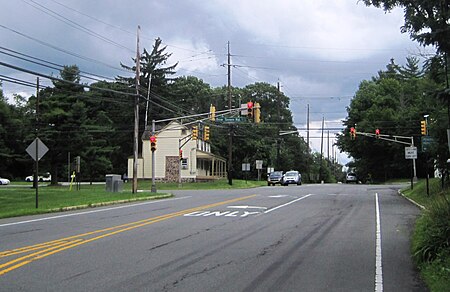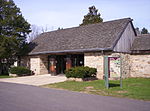Bear Tavern, New Jersey
Hopewell Township, Mercer County, New JerseyMercer County, New Jersey geography stubsNew Jersey in the American RevolutionTaverns in the American RevolutionUnincorporated communities in Mercer County, New Jersey ... and 3 more
Unincorporated communities in New JerseyUse American English from July 2023Use mdy dates from July 2023

Bear Tavern is an unincorporated community located within Hopewell Township in Mercer County, in the U.S. state of New Jersey.The settlement is named for a historic tavern once located there. During the American Revolutionary War, troops led by George Washington crossed the Delaware River at a location west of the settlement, then "trekked inland to the Bear Tavern and turned right, heading southeast toward Trenton".The settlement is today located at the corner of Washington Crossing Pennington Road and Bear Tavern Road. Washington Crossing State Park is located immediately to the northwest. Bear Tavern Elementary School is located south of the settlement.
Excerpt from the Wikipedia article Bear Tavern, New Jersey (License: CC BY-SA 3.0, Authors, Images).Bear Tavern, New Jersey
Bear Tavern Road,
Geographical coordinates (GPS) Address Nearby Places Show on map
Geographical coordinates (GPS)
| Latitude | Longitude |
|---|---|
| N 40.308888888889 ° | E -74.848611111111 ° |
Address
Bear Tavern Road 1181
08560
New Jersey, United States
Open on Google Maps









